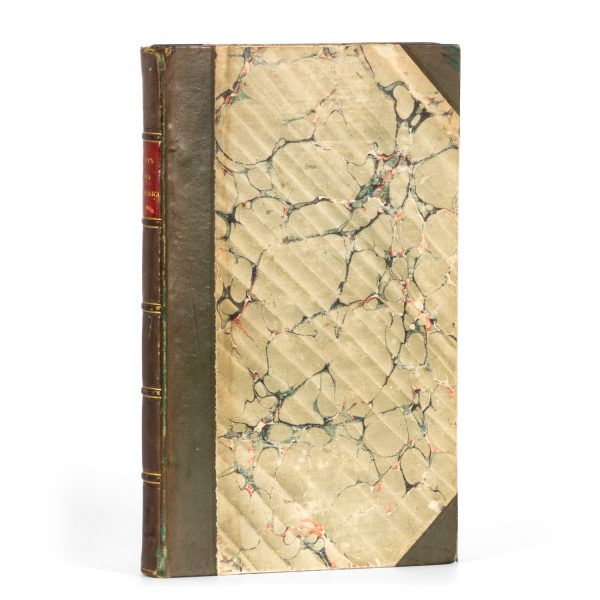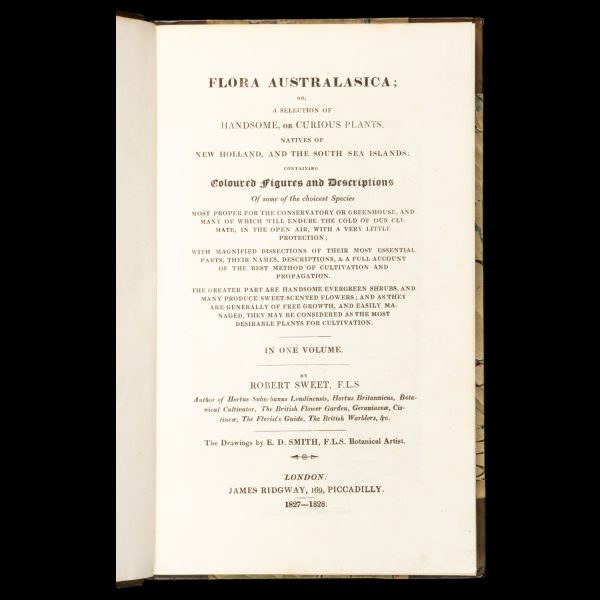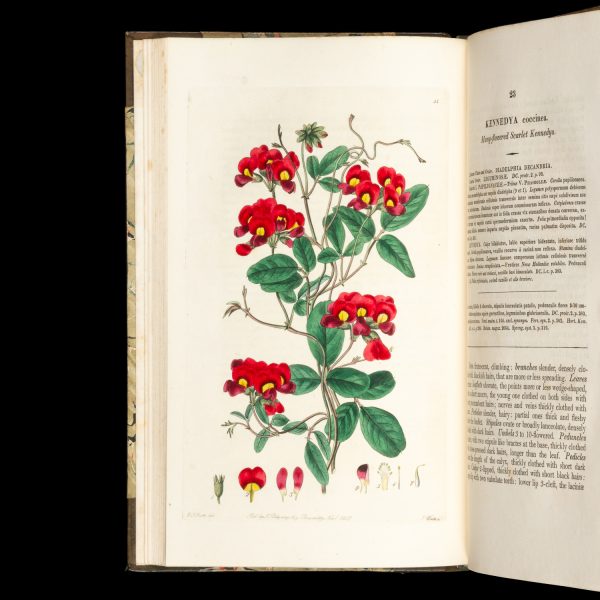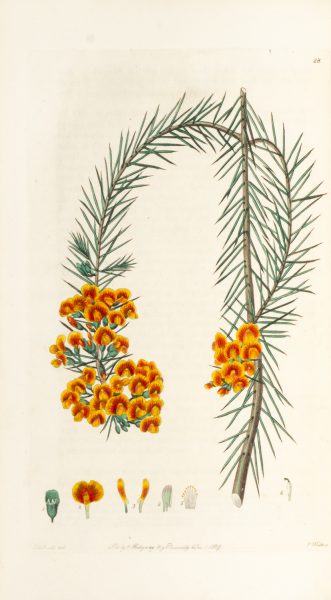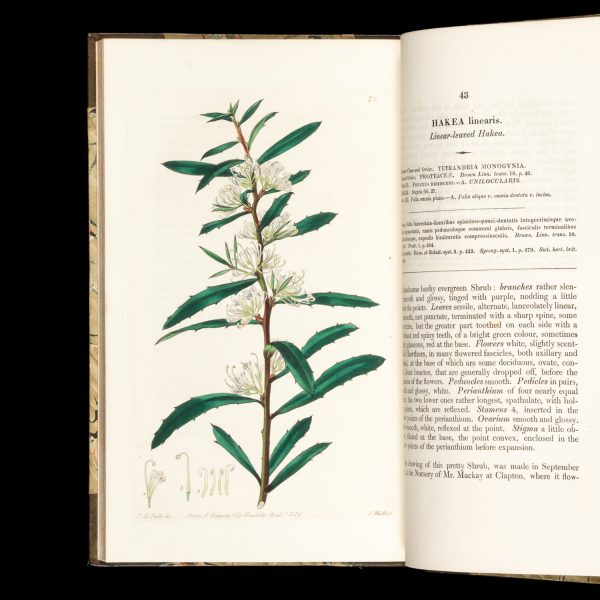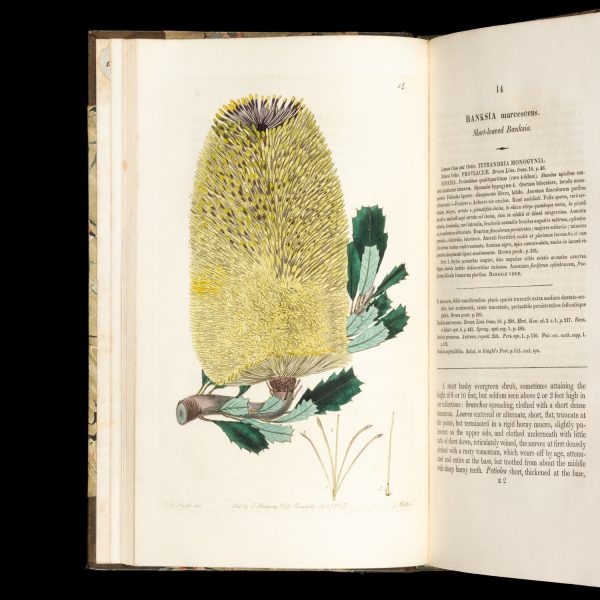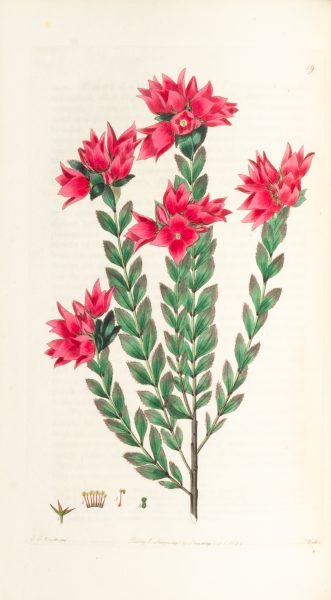# 46733
SWEET, Robert (1783-1835)
Flora Australasica ; or, a selection of handsome, or curious plants, natives of New Holland, and the South Sea islands…
London : James Ridgway, 1827-1828. First edition, first issue. Octavo (250 x 160 mm), contemporary half-calf over marbled papered boards (edges slightly rubbed), spine in compartments with raised bands ruled in gilt, contrasting morocco title piece lettered in gilt; front pastedown with armorial bookplate of Charles Scrase Dickins; 56 exquisite hand-coloured engraved plates by S. Watts from drawings by E. D. Smith (the plates not watermarked, but with engraved dates of 1827-28), each with 2 pages of text (the text paper watermarked with the date 1825); a fine copy.
The first book to contain illustrations of Australian plants and flowers drawn from living specimens, rather than ones that had been field-collected, dried and pressed. The specimens illustrated were grown from seeds in London nurseries – a direct result of the adoption of the methods of Joseph Banks.
Sweet’s work, with its fine engraved illustrations drawn by botanical artist Edwin Dalton Smith, is the third illustrated book devoted to Australian botany, after those of James Edward Smith (1793) and Ferdinand Bauer (1813). Unlike his two predecessors, however, Sweet was neither a botanical scientist nor botanical illustrator, but a horticulturalist; consequently, what sets his Flora Australasica apart from those two earlier works is the fact that its focus is as much on cultivation as scientific classification. This approach is reflected in Sweet’s own remarks on the title page regarding the plants selected for his book: ‘The greater part are handsome evergreen shrubs, and many produce sweet- scented flowers; and as they are generally of free growth, and easily managed, they may be considered as the most desirable plants for cultivation’.
The plants cultivated in London nurseries were grown from seeds that came from specimens collected in various parts of Australia: these include nine different plants collected at King George’s Sound (Albany) in Western Australia, and sixteen from ‘the south coast of New Holland’, with the majority of the remainder originating from Port Jackson or Tasmania. Sweet is conscientious in his recording of as much field-collection data as possible. From his notes we learn, for example, that many of the plants were collected in situ by one William Baxter, a plant hunter in the employ of London nurseryman Francis Henchman.
Ferguson 1144; Nissen, BBI 1924





